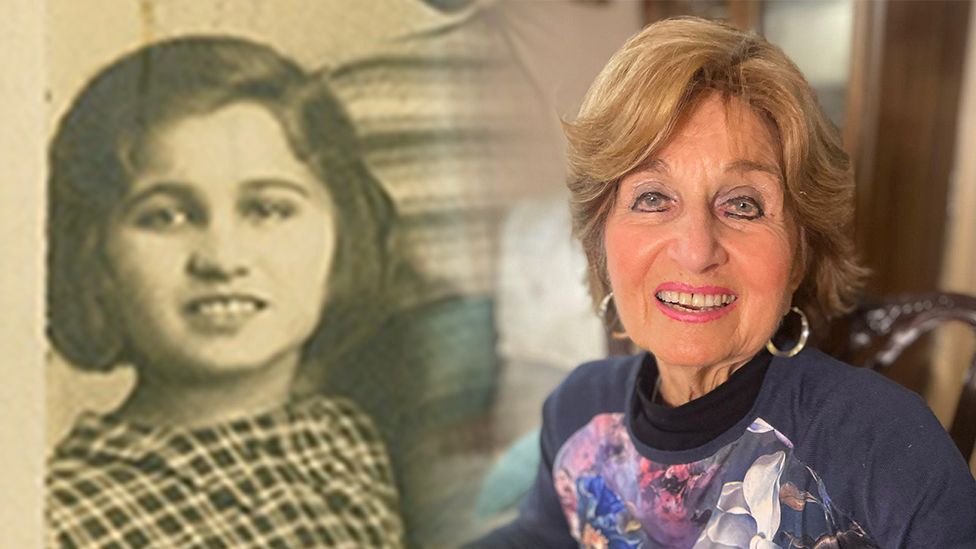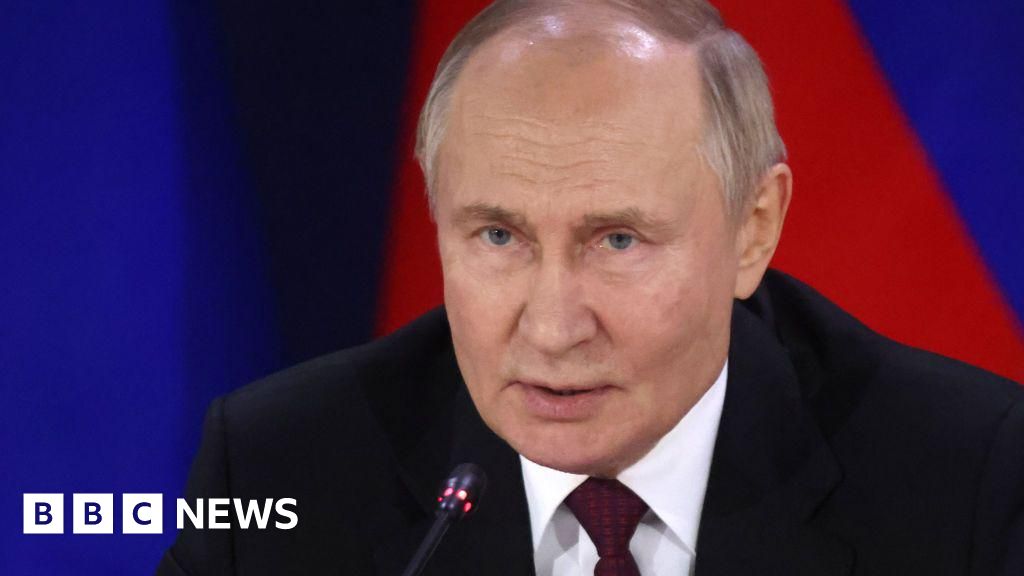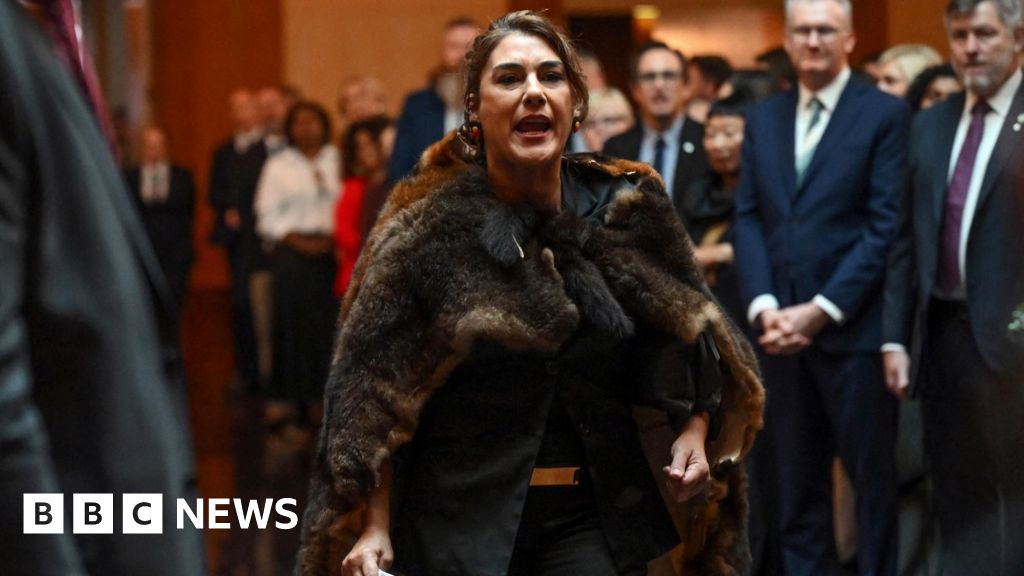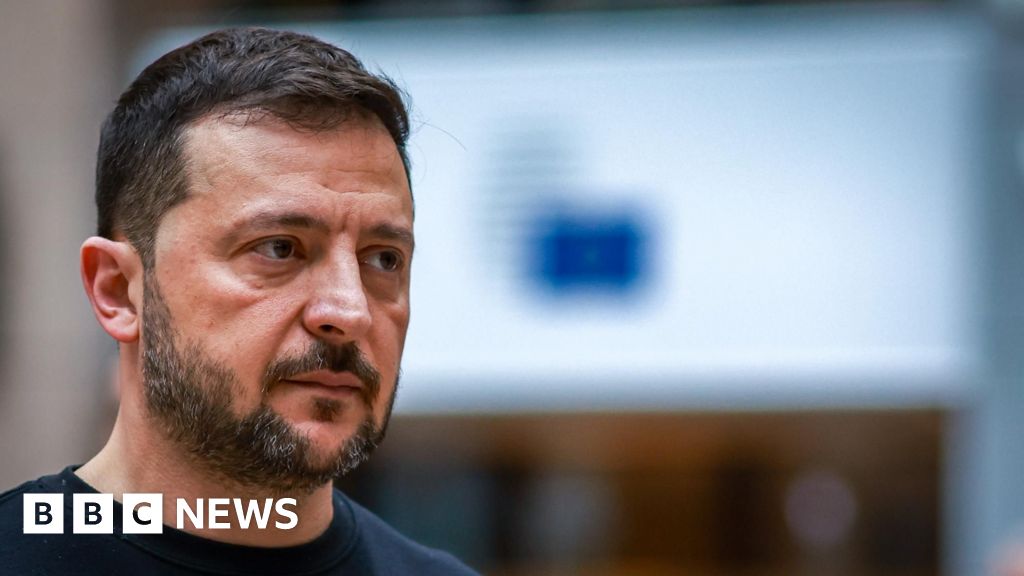ARTICLE AD BOX
 Image source, US Holocaust Museum/BBC
Image source, US Holocaust Museum/BBC
Blanche Fixler and a picture of her as a child, circa 1945
By Tom Gerken
Technology team
Blanche Fixler remembers hiding inside a bed while Nazis searched for her.
"I felt them tapping on the bed," she recalls. "I said, you better not breathe or sneeze or anything - or you'll be dead."
Blanche was a survivor - she was lucky. Six million Jews like her were murdered by the Nazis in the Holocaust during World War Two. The names of more than one million of those people are unknown.
Now a tool using artificial intelligence (AI) - built by Daniel Patt, a software engineer for Google - could hold the key to putting names to some of the many faces, both victims and survivors, in hundreds of thousands of historic photographs. It found Blanche in a wartime photo which she had never seen before.
Daniel's website, Numbers to Names, uses facial recognition technology to analyse a person's face. It then searches through archive photos to find potential matches.
The software has been cross-referencing millions of faces, to try to find matches for people who have already been identified in one photo - but not in others.
That detective work - joining the dots - could then help identify some people in photos whose identities are currently unknown.
Blanche, who is now 86 and lives in New York, knew about the family snapshot below on the right - but she had never previously seen the group photo on the left, which was taken in France during the war.
It was Daniel's AI software which made the connection.
Image source, US Holocaust Museum
Image caption,Blanche's face in the archive photo on the left, was previously listed as unidentified - she knew about the family photo on the right
Blanche was known by the name Bronia as a child. She lived in Poland when the Nazis came looking for her and her family.
Her mother and her siblings were murdered - but she was saved, thanks to her Aunt Rose, who hid her.
Daniel travelled to meet Blanche to reunite her with the lost image from the past.
It triggered a long forgotten memory in her - a French song she learned as a child.
Blanche immediately recognised herself standing at the front of the large group of people, but that's not all.
She also identified her Aunt Rose and one of the boys in the photo - giving Daniel and the United States Holocaust Memorial Museum new information to work with.
"It's so important to identify these photos," says Scott Miller, director of curatorial affairs at the museum.
"You're restoring some semblance of dignity to them, some comfort to their family, and it's a form of memorial for the entire Jewish community."
"That's part of the problem. I can't stress enough how important these photos are of individuals.
"We all know the figure - six million Jews were killed - but it's really one person six million times. Every person has a name, every person has a face."
Image source, US Holocaust Museum
Image caption,Blanche is in the middle of the front line - previously only three people in this photo had been identified
Before Blanche set eyes on the photo, only three people in it had been identified.
Thanks to Blanche, and Daniel's software, that number has doubled.

 2 years ago
13
2 years ago
13








 English (US)
English (US)